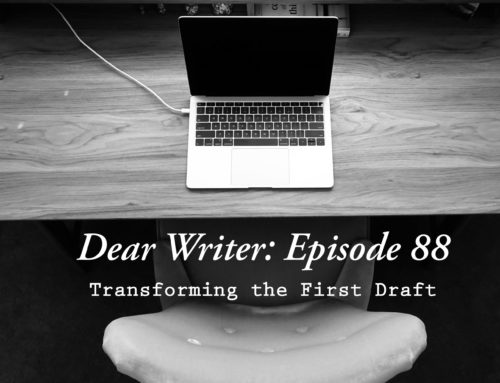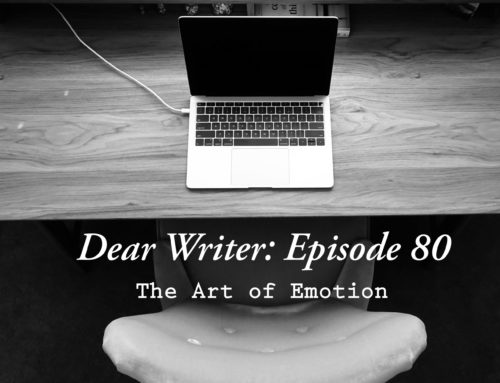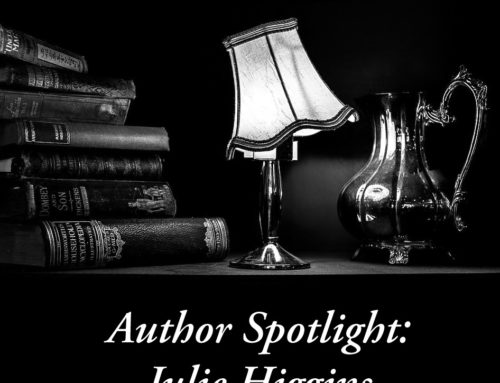Creating Realistic Relationships
On this craft episode of Dear Writer, we talked about how to create realistic relationships between characters, and why this aspect of character creation is important.

Episode Summary:
We’ve talked about the importance of building believable characters on another episode of Dear Writer, however, there was one aspect of this that we didn’t spend a lot of time on, character relationships. Why is it important to write realistic relationships between characters?
Ashley: As a reader I love the relationships between characters. Whether it be romantic, friendship or enemies. It is these relationships that make great fiction, and novels that readers love. So, as a writer it is incredibly important to make these relationships realistic. If they aren’t, you might lose your readers.
Sarah: There’s that really old and well-known phrase ‘No Man is an Island’, which is entirely true. Our life revolves around a multitude of different relationships and they are a big part of learning about ourselves and learning about the world around us, which is why it helps to have character relationships develop the character arc. And because it is so important to us in real life, again, that should be reflected in the lives of your characters. It goes even deeper than you thing: as a species, we as humans rely on communicating and cooperating with each other in order to survive, and we are obviously very social creatures. It’s basically written into our DNA. So, even if you are writing about an alien from a different planet, it’s important to give your character human qualities and traits, because I can (almost) 100% guarantee you that your readers will be human!
Where can writers get inspiration for great relationships?
Ashley: Your own life, and the relationships in them. We’ve mentioned this before, but watching and taking example from the good and bad relationships in your life (and your friends lives) are all great places to find inspiration. Secondly, from your favourite books/movies. Often these sources of media have great relationships to take inspiration from.
Sarah: I think this is definitely where the older you are, the more material you have to work with! Because inspiration for relationships primarily comes from your own experience—even if it’s something you’ve witnessed that your drawing your inspiration from (other people in your life, films, books), your interpretation of that is going to leak into your writing. I think that’s where the realism comes in, is how you manage to get across the feelings involved within an interaction.
How can character traits and character backstory/motovations help with the creation of realistic relationships?
Ashley: Good relationships stem from unique characters with interesting traits and flaws. Characters that you care about coming together make for relationships that the readers want to follow. An important thing to remember about your characters and their relationships are that they all have backstories. Our history has a massive impact on how we approach relationships. The same is true for your characters. Have they had back luck with men in the past? Have they had toxic friendships before that make them wary of letting people get close? Have they been hurt before? Have they ever been in love? Have the two characters in the relationship met before, or do they have history? The answers to these questions come from the backstories you have given them, and will dictate how they approach new relationships and act once they are in them.
Sarah: Interestingly, I think one of the key parts of backstory and developing character motivations is to enhance your own relationship with that character. Once you have a relationship with that character by giving them a backstory and creating them a life, you can begin to understand them more, and understand how they might interact with a character from a different background. If you as the writer don’t understand where the character is coming from or who they are at their core, then it’s going to be very hard to write a realistic scene. This is where characters feel flat or two-dimensional, because they haven’t got a history. This even goes for the ‘bad guys’. You know how, so often, you end up with ‘bad guys’ that feel just generic and plonked onto the page? I think how they act towards the character and the way they interact makes more sense if you take yourself out of your protagonist’s shoes for a minute and consider what it’s like to be an unnamed bad guy serving the big bad villain. Why are they there? What sort of character follows this person’s orders without question? Are they weak-minded? Are they being blackmailed? What’s in it for them? That way, when you put yourself back into the character’s shoes, it makes them more real, desperate, and malicious in their interactions.
Characters that don’t develop and change are, well, boring. The same can be said for character relationships. Relationship arcs (like character arcs) are a helpful tool for planning out relationships in novels. Have we used this technique before, and why do we think this could be useful?
Ashley: Sort of. Occasionally we will have a rough outline of where we want the relationship to go, and some ideas of the trouble they face along way. But we don’t often do a detailed plan. We like to let the relationships develop organically and see where they take us. I do think that it is important to make sure that the relationships are always dynamic and constantly evolving. No relationship is perfect, and readers want conflict and drama. So, give it to them!
Sarah: There are two ways I see relationships used as an ‘arc’. If you’ll remember in our episode about subplots, we talked about one of the subplot types being relationship subplots, whether they be romantic relationships, friendships, or other relationships. Used in this way it can advance your plot and enrich your theme. But also, in speaking more specifically about the relationship’s evolution, as Ashley mentioned relationships change overtime—they don’t stay static. I always aim to have the relationship constantly changing and growing, no matter what stage the characters are at. I do think conflict in relationships is important for keeping the readers engrossed, but it’s also important for making the relationship seem valid and realistic. As anyone in a marriage will tell you, it’s hard work! And that goes for all long-term relationships. You’re not going to always agree, and so your characters shouldn’t either. There should be things in your book that drive your characters apart, and things that pull them back together. The more you do this, the stronger that relationship is going to be, and your readers are going to feel this connection and root for your characters.
The choice of perspective (first vs third person) and the narrator (who is telling us the story) can have a massive impact how readers perceive relationships between characters. How does the perspective and the choice of narrator affect character relationships?
Ashley: I think it is really important. The different perspectives allow different views of relationships. For example, first person narration allows the reader to experience the inner thought of the character intimately, but have limited knowledge of the motivations of the other characters. This can create really interesting dynamics which we have exploited heavily in When the Rain Falls. The choice of narrator also affects the reader’s perception of the relationship as well. Who is going to be telling the story? In a story of betrayal, is it the betrayer or the person who was betrayed who tells the story? Because those two stories would be very different, depending on who tells it.
Sarah: Firstly, when choosing a narrator, you have to consider the degree of intimacy from the perspective of not only how well you want your characters to relate to the reader, but also whether you actually want the readers to know the inner workings of their minds. For some characters, it can be useful to provide more intimacy and forge a bond that keeps the reader engaged in the book—this is usually your protagonist. But even when you have multiple viewpoints, it really pays to consider each character carefully. For example a beta reader wanted us to include an extra character perspective in The Price of Pandemonium. We considered what she said, but knew that if we allowed this character’s thoughts to come across, the reader would relate too strongly with a character who we’d prefer they view in a more negative light. It would have muddied the waters too much and the resulting impact of the other character’s decisions wouldn’t have been as effective. Secondly, when deciding on first and third person, this also has an impact. First person is arguably most intimate (though a great deal of intimacy can also be achieved through third person) but is heavily biased through the character’s eyes. You can use this to your advantage when telling stories from unreliable narrators by drip feeding the actual information to the reader. Third person is a more rounded view of what’s going on, but the degree of intimacy is more based on how much direct thoughts are used and whether it’s third-person limited or third-person omniscient. Even when direct thoughts are used in the omniscient style, I think the degree of intimacy is lessened because as a reader you literally feel further away from the characters (bird’s eye view rather than feeling like you’re in the midst of the action) and you have access to more than one character’s thoughts at a time, so it doesn’t feel as immediate or as intense.
What are some specific writing techniques to help create realistic relationships?
Ashley: Dialogue. We’ve both mentioned before how we love using dialogue to progress plot and develop character. The same can be said about dialogue to develop realistic relationships. Relationships are built on how we communicate with others, the things we say to them (and what we don’t say). If you are able to effectively recreate this in dialogue in your novel, it will go a long way at making your relationships realistic. I also love to use internal monologue in conjunction with dialogue. Ie, What are the characters not saying to each other? Internal monologue can be used to reveal your characters true feelings/motivations and intentions. It gives readers a glimpse into your characters most raw emotions.
Sarah: Definitely dialogue. I won’t go into it too much because I know Ashley has something to say about this! But also think about the different ways we communicate—body language being a huge one. How is the character acting in the interaction? Shoulder’s hunched? Turning away? Not looking the other character in the eye? What degree of importance are they placing on the relationship? Are they multitasking and doing something else at the same time? Does the other character hold their full attention? What things can be misconstrued by how they’re acting, what they’re saying, and what they’re not saying? How might you use this to your advantage when writing the scene?
What are some common character relationship tropes that annoy us (and consequently, your readers)?
Ashley: The one where the girl is nerdy and all she needs is a make-over to make the cute guy fall for her. I also hate it when characters sit there and stare longingly and lovingly into each other’s eyes for ages. It OK once. But it’s not something I ever do, so it weirds me out thinking about people just sitting there and doing that without feeling some awkwardness.
Sarah: Characters who fall immediately ‘in love’ with barely sharing or talking about their life experiences to the point where it’s a bit weird and stalker-y for them to be thinking about the other person quite that intensely. Characters who agree on EVERYTHING (no one is that agreeable, and if they are they’re a bit of a doormat so it doesn’t entice me to like the character!). In fact, I once read a psychologist’s opinion on people who never fight as a ‘red flag’ because it means one person in the relationship is most likely constantly backing down and not upholding their values. If you intend this, then great, but this weak character should show change and learn how to speak up at some point in their journey. In the same vein, relationships without conflict. Nothing is ever all rainbows and unicorns.





















Leave A Comment